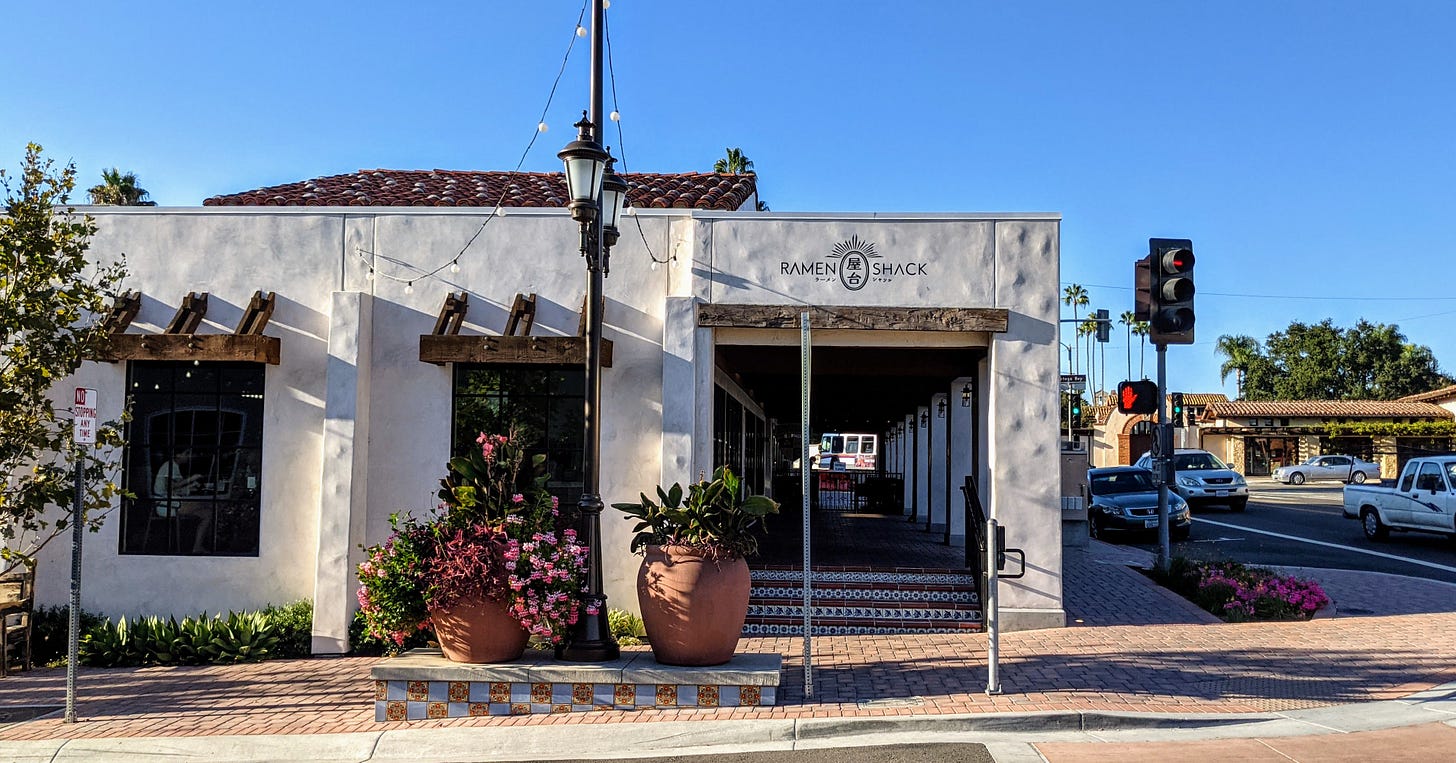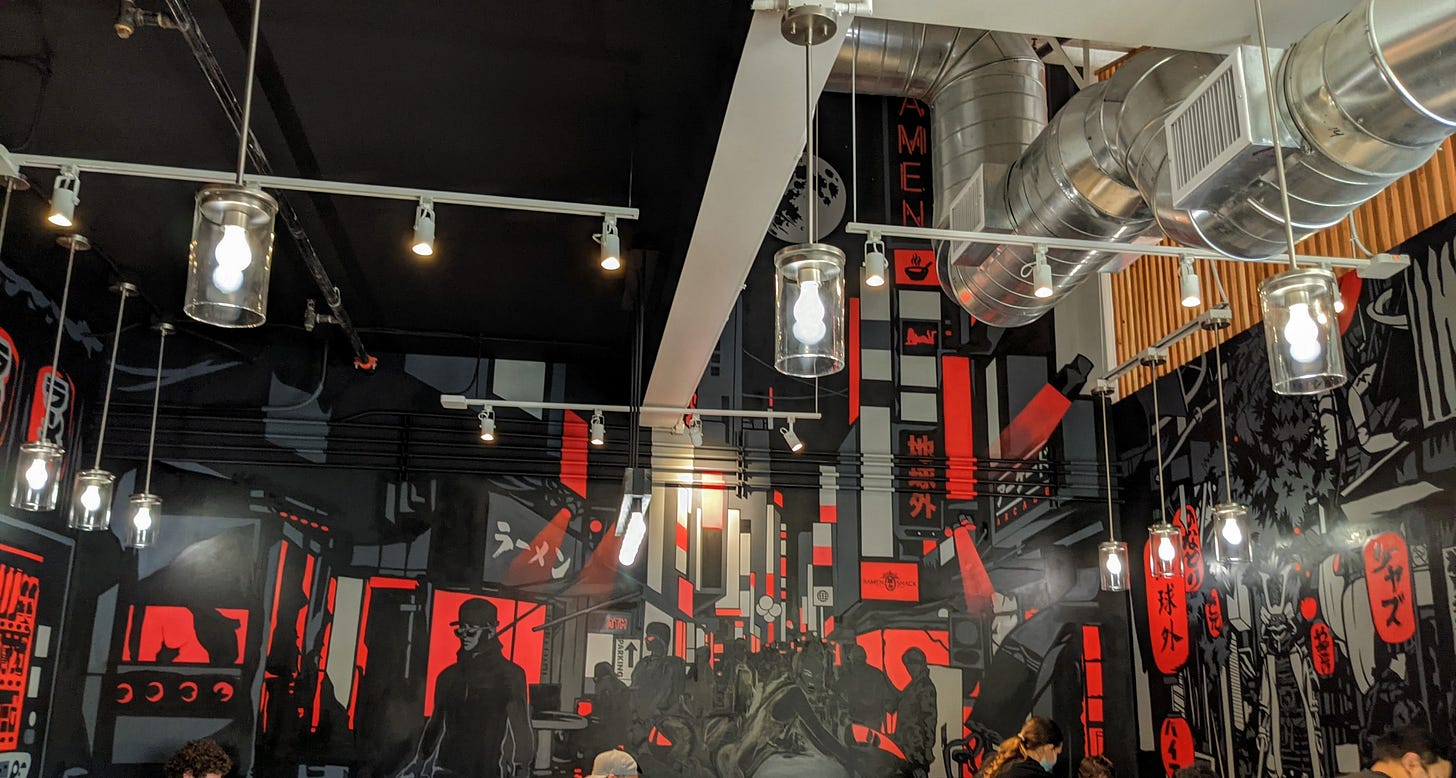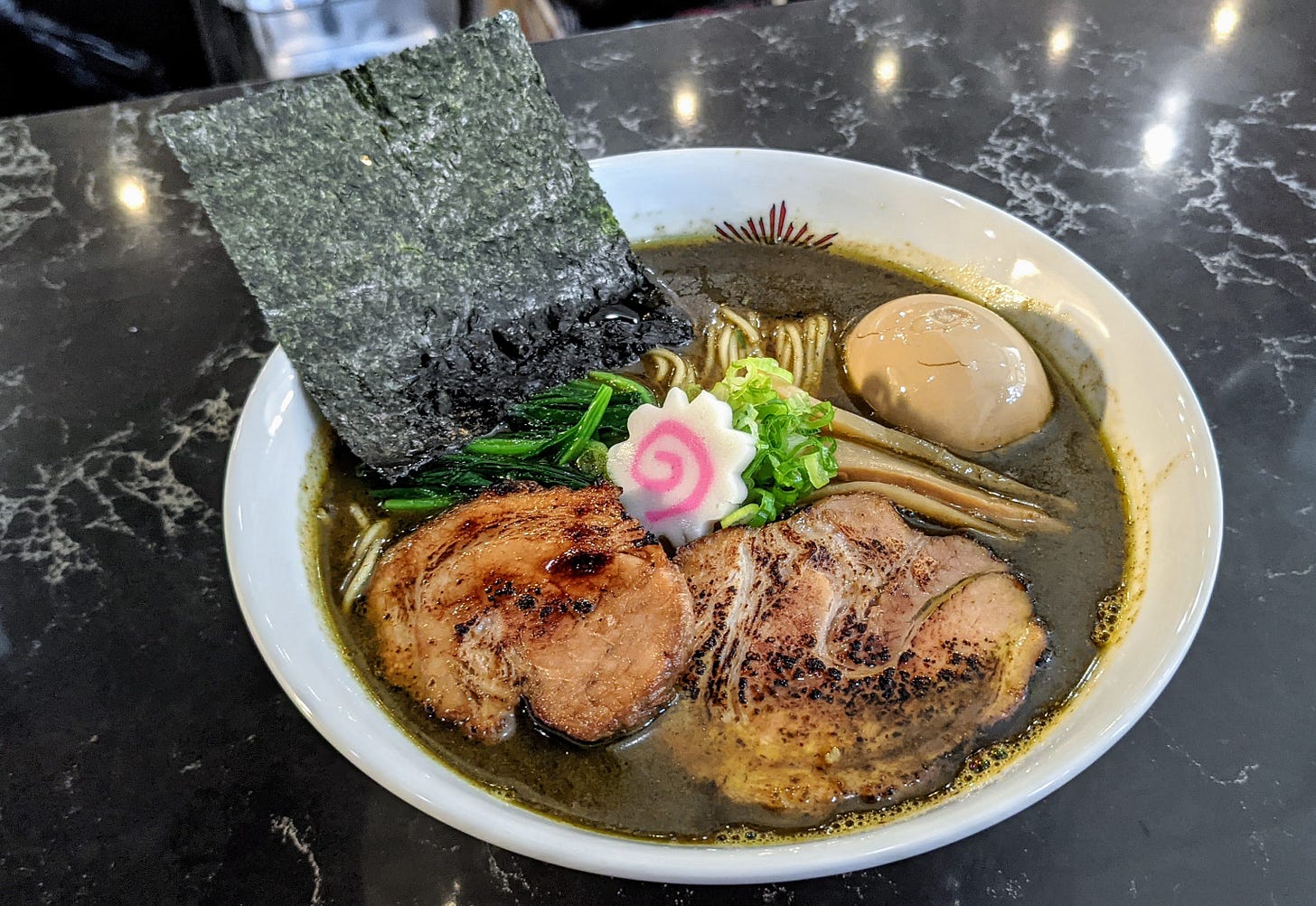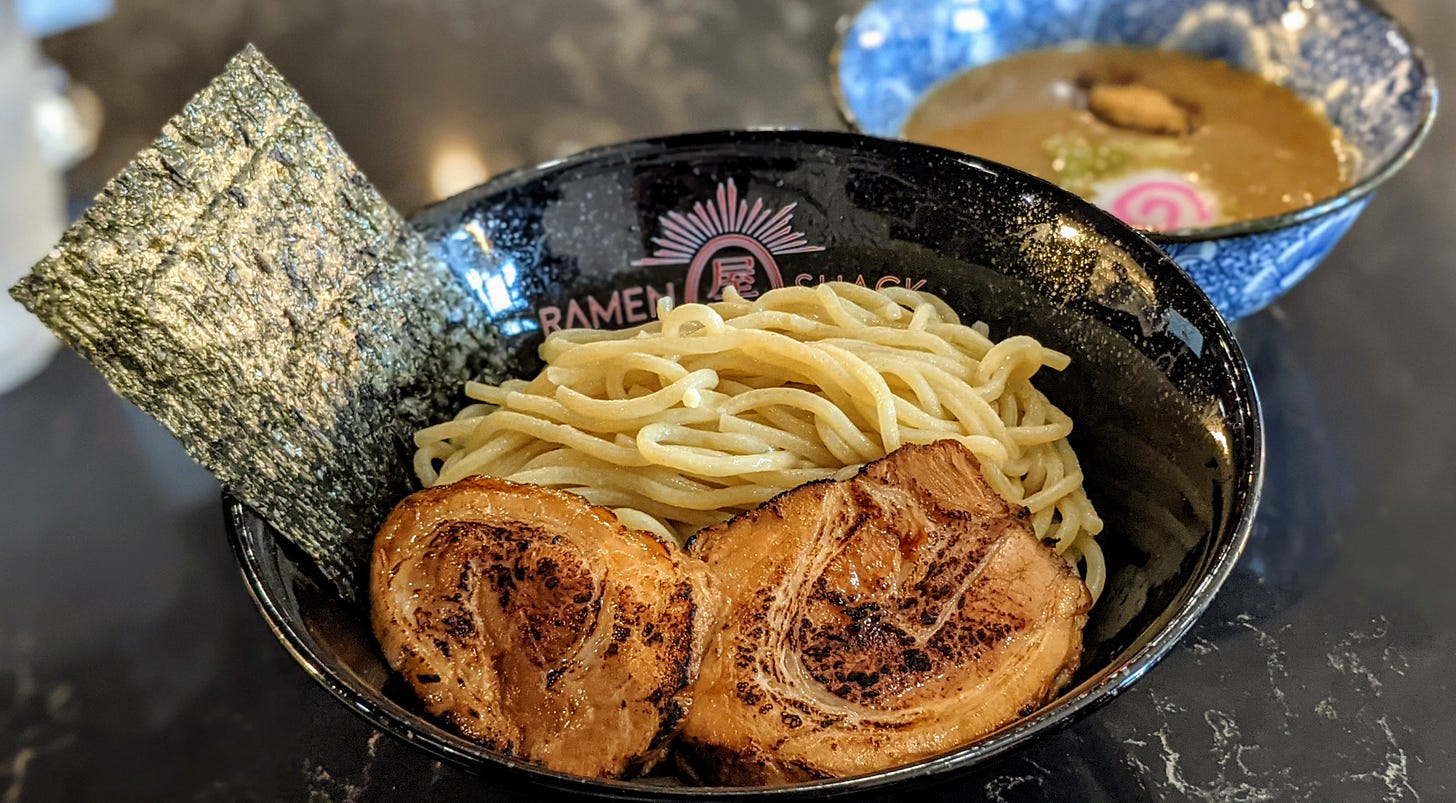🇯🇵 JAPAN
📍 31761 Camino Capistrano,
San Juan Capistrano, Orange County
EDITOR'S NOTE: This restaurant has closed permanently.
📸 All photos by Jared Cohee
for Eat the World Los AngelesHISTORICAL ARTICLES are brought over from eattheworldla.com to make sure our Substack content is constantly growing and as full of depth as possible. These will never be behind the paywall.
📆 Original Article 23 September 2021Has it really been two and half years since the Chef Keizo Shimamoto served his last bowl of glorious ramen at a permanent location in Long Island City, Queens? There were pop-ups here and there that fans chased, and a brief almost permanent run in Midtown that was ended by COVID, but it left a giant ramen bowl-sized hole in the New York City food world. Unfortunately for New Yorkers the hole will remain, as the chef has decided to head to his roots in the west setting up this new ramen shop in San Juan Capistrano.
On a first visit and only after two bowls, it appears that same quality is as strong as the glory days of Queens, with broths and noodles just as delicious as ever. Set in the tourist eatery row of the city's main drag just a short skip south of the Mission, the ramen-ya is currently in a soft opening phase since the 16th of September, open for four hours per day, six days a week. Please make sure to check their information before going.
Entering from Camino Capistrano, you come into a room that has a takeout counter feel with a menu board above it, unused except maybe by waiting patrons during busy times. Past this is the main dining room, split between high counter seating and tables, a small place that conjures up eating ramen in Japan before 2020. The walls are in black, red, and grey tones evoking images from the food alleys in Tokyo.
Long time customers of Ramen Shack will have slurped many bowls of the chef's signature shoyu, a soy sauce-based chicken and dashi broth. Not as often on menus years ago is the dirty shoyu (below), a bowl of dark, muddy broth made from the addition of dried sardine (niboshi) paste. Lifting these thin, house-made noodles out of the muck and into your mouth removes anything possibly "dirty" about it though, the tastes from the sea combining perfectly with the chicken and dashi.
If you have found yourself unimpressed by flappy, flavorless slices of thin chashu lately, Ramen Shack is probably the place to reinvigorate a passion for this braised pork belly. It is amazing here, about three times the thickness you will find standard, and kissed by the fire of the chef's blowtorch for a touch of smoke. Two slices come standard with many choices, but you would not be faulted for ordering extra. The bowl here was given an extra ajitama, a perfectly soft boiled egg with runny yolk.
While some bowls come with the option of thick or thin noodles, the Ganja-style tsukemen (below) is only available with a broad tonkotsu gyokai dipping noodle for good reason. This noodle does an excellent job picking up extra levels of the thick shoyu-based concentrated broth, which is served very hot and should be attacked with vigor just like any other bowl of ramen begging to be eaten at its peak heat.
This style of ramen might be more popular during warmer months, but really can be enjoyed at anytime especially in Southern California. It allows you to appreciate the noodles more than any other variety since they do not continue to cook after serving.
And for those that never lived in New York or tasted the chef's noodles during a visit but feel like the name is familiar? Yeah, he is the creator of the ramen burger, and yeah, you can still order one if that floats your boat. The spirit of 2013-2014 Smorgasburg is alive.
🇯🇵 🇯🇵 🇯🇵








